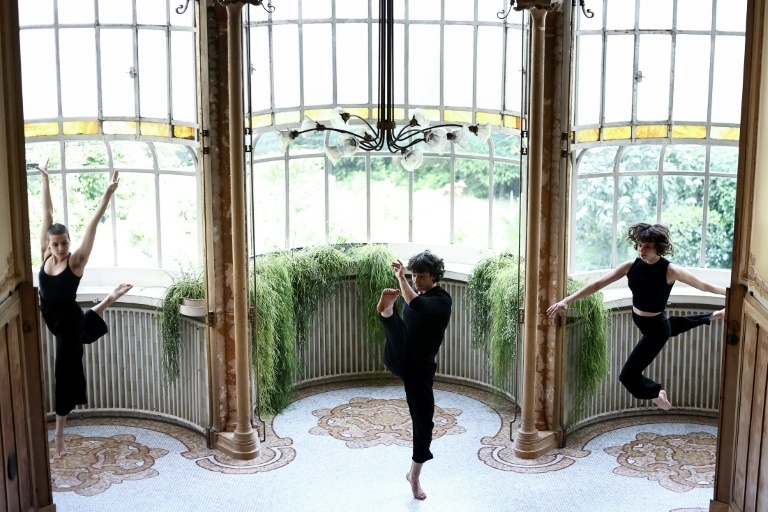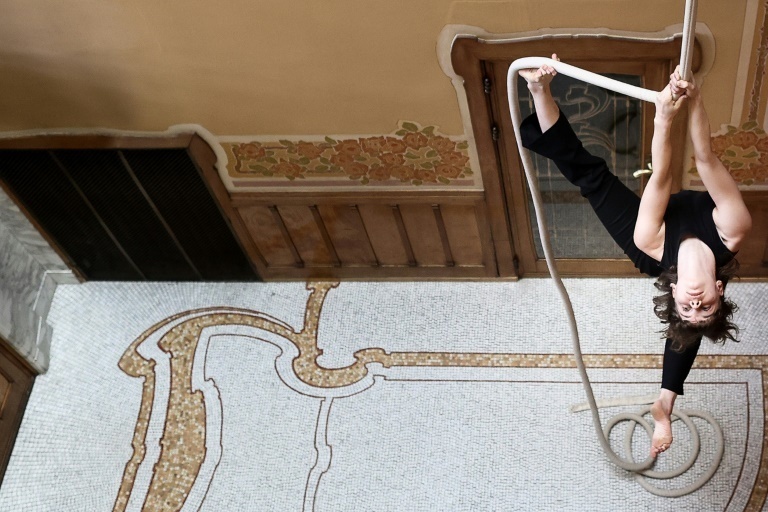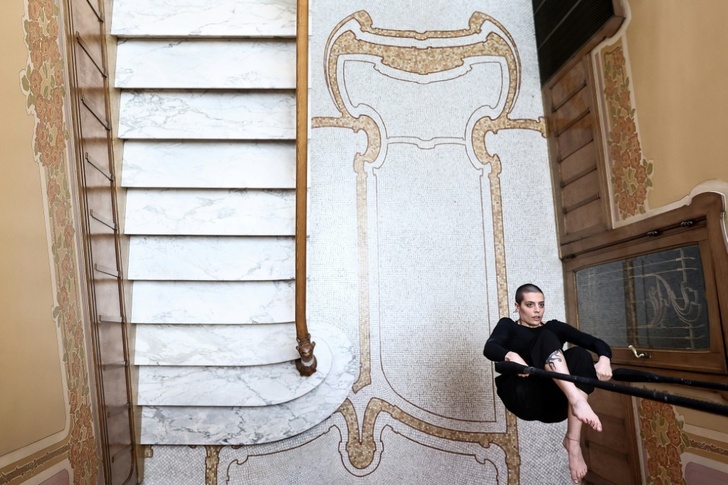Belgium's capital Brussels is a treasure trove of Art Nouveau gems and now the city is trying to attract new audiences to its rich heritage, with the help of acrobats and trapeze artists.
The Belgian capital's decorative deights are thanks in large part to feted architect Victor Horta (1861-1947).
To mark the 130th anniversary of Horta's first landmark masterpiece, Tassel House, the authorities have designated 2023 the year of Art Nouveau.

Born at the end of the 19th century, the Art Nouveau movement was based around the aesthetics of curves, combined with intense craftsmanship centred in particular on sgraffito wall decorations and stained glass.
Among the initiatives aimed at shining a spotlight on the Art Nouveau riches is the eye-catching decision to invite acrobats into these museum-like spaces.
"It's an architecture inspired by life, the body and plants," Michael Hottier, co-director of the Brussels-based acrobatic company behind the project, told AFP.
"You very quickly get the natural connection with grace, the organic side."
A trapeze artist dangled down the middle of a sweeping staircase and acrobats perched in front of an intricate window at another house designed by Horta.
The students from Brussels' Higher School of Circus Arts were being captured for a visual project "Arabesque" that will go on display to draw attention to the masterpieces.
Staging shows for lots of people in the protected buildings is not feasible, so the photo and video displays should help bring it to a broader audience.
But it wasn't always the case that these architectural jewels were treated with such reverence.
As Brussels went through the upheavals of the 20th century, they were often left abandoned, damaged by war or denigrated by city planners.
Horta's piece de resistance -- the grand People's House -- was torn down in the 1960s to be replaced by a high-rise office block.
Those that did survive have now been restored to their former glory and are being showcased to the public.

Hottier hopes the acrobatic exhibition will tour beyond Brussels and spread knowledge of the city's Art Nouveau wealth outside of Belgium.
"These are buildings where you feel good, where the light is beautiful," he said.
jca/jug/pvh
© Agence France-Presse
Your content is great. However, if any of the content contained herein violates any rights of yours, including those of copyright, please contact us immediately by e-mail at media[@]kissrpr.com.
Source: Story.KISSPR.com

